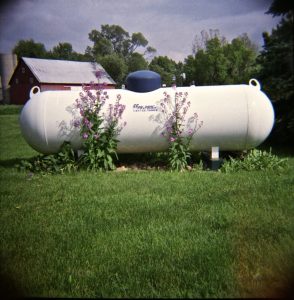8.2 Classifying Composition, Decomposition, and Combustion Reactions
Learning Objectives
By the end of this section, you will be able to:
- Identify composition, decomposition, and combustion reactions.
- Predict the products of a combustion reaction.
Three classifications of chemical reactions will be reviewed in this section – composition, decomposition and combustion – while two additional chemical reactions (single and double displacement) will be explored in the proceeding section. Predicting the products in some of them may be difficult, but the reactions are still easy to recognize.
Watch Types of Chemical Reactions (5 mins)
Video source: Ysci. (2017, December 7). Types of chemical reactions [Video]. YouTube.
A composition reaction (sometimes also called a combination reaction or a synthesis reaction) produces a single substance from multiple reactants. A single substance as a product is the key characteristic of the composition reaction. There may be a coefficient other than one for the substance, but if the reaction has only a single substance as a product, it can be called a composition reaction. In the reaction
2 H2(g) + O2(g) → 2 H2O(ℓ)
water is produced from hydrogen and oxygen. Although there are two molecules of water being produced, there is only one substance – water – as a product. So this is a composition reaction.
A decomposition reaction starts from a single substance and produces more than one substance; that is, it decomposes. One substance as a reactant and more than one substance as the products is the key characteristic of a decomposition reaction. For example, if we look at the decomposition of sodium hydrogen carbonate (also known as sodium bicarbonate):
2 NaHCO3(s) → Na2CO3(s) + CO2(g) + H2O(ℓ)
We can see that sodium carbonate, carbon dioxide, and water are produced from the single substance sodium hydrogen carbonate.
Composition and decomposition reactions are difficult to predict; however, they should be easy to recognize.
Example 8.2a
Problems
Identify each equation as a composition reaction, a decomposition reaction, or neither.
- Fe2O3 + 3 SO3 → Fe2(SO4)3
- NaCl + AgNO3 → AgCl + NaNO3
- (NH4)2Cr2O7 → Cr2O3 + 4 H2O + N2
Solutions
- In this equation, two substances combine to make a single substance. This is a composition reaction.
- Two different substances react to make two new substances. This does not fit the definition of either a composition reaction or a decomposition reaction, so it is neither. In fact, you may recognize this as a double-replacement reaction.
- A single substance reacts to make multiple substances. This is a decomposition reaction.
Exercise 8.2a
Identify the equation as a composition reaction, a decomposition reaction, or neither.
C3H8 → C3H4 + 2 H2
Check Your Answer[1]
A combustion reaction occurs when a reactant combines with oxygen, many times from the atmosphere, to produce oxides of all other elements as products; any nitrogen in the reactant is converted to elemental nitrogen, N2. Many reactants, called fuels, contain mostly carbon and hydrogen atoms, reacting with oxygen to produce CO2 and H2O. For example, the balanced chemical equation for the combustion of methane, CH4, is as follows:
CH4 + 2 O2 → CO2 + 2 H2O
Kerosene can be approximated with the formula C12H26, and its combustion equation is
2 C12H26 + 37 O2 → 24 CO2 + 26 H2O
Sometimes fuels contain oxygen atoms, which must be counted when balancing the chemical equation. One common fuel is ethanol, C2H5OH, whose combustion equation is
C2H5OH + 3 O2 → 2 CO2 + 3 H2O
If nitrogen is present in the original fuel, it is converted to N2, not to a nitrogen-oxygen compound. Thus, for the combustion of the fuel dinitroethylene, whose formula is C2H2N2O4, we have
2 C2H2N2O4 + O2 → 4 CO2 + 2 H2O + 2 N2
Example 8.2b
Problems
Complete and balance each combustion equation.
- the combustion of propane, C3H8 (Figure 8.2a)
- the combustion of ammonia, NH3
Solutions
- The products of the reaction are CO2 and H2O, so our unbalanced equation is C3H8 + O2 → CO2 + H2O. Balancing (and you may have to go back and forth a few times to balance this), we get C3H8 + 5 O2 → 3 CO2 + 4 H2O.
- The nitrogen atoms in ammonia will react to make N2, while the hydrogen atoms will react with O2 to make H2O, thus NH3 + O2 → N2 + H2O. To balance this equation without fractions (which is the convention), we get 4 NH3 + 3 O2 → 2 N2 + 6 H2O.

Exercise 8.2b
Complete and balance the combustion equation for cyclopropanol, C3H6O.
Check Your Answer[2]
Attribution & References
Except where otherwise noted, this section is adapted by Adrienne Richards from “Chemical Reactions and Equations: Composition, Decomposition, and Combustion Reactions” In Introductory Chemistry: 1st Canadian Edition by David W. Ball and Jessica A. Key, licensed under CC BY-NC-SA 4.0.
A chemical reaction in which a single substance is produced from multiple reactants.
A chemical reaction in which a single substance becomes more than one substance.
vigorous redox reaction producing significant amounts of energy in the form of heat and, sometimes, light

